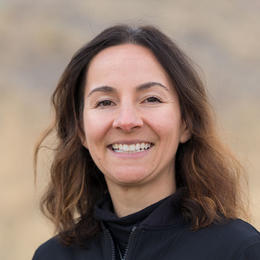Monarchs (Danaus plexippus;) are the most well-known of all butterflies in North America. They have a fascinating life cycle flying about 3000 miles from their overwintering habitat in southern Mexico to their summer habitat in the northern United States and southern Canada (more information on their migration here). No individual monarch flies the entire distance. Instead successive generations complete the journey. Each generation lay eggs along their route. About four generations of monarchs make the round trip journey each year. Monarchs are thought to have a migration route on either side of the Rocky Mountains and extremely little is known about monarchs in Wyoming. Monarchs only lay eggs on milkweed plants. The eggs hatch from the underside of leaves and the caterpillars eat the milkweed. Milkweed contains cardiac glycosides, which is a toxic substance some plants use as defense against herbivores (to avoid being eaten by animals). The toxins do not bother the monarchs; instead, the monarchs use the toxins to ward off predators (they taste bad!). Monarch’s bright colors warn predators that they are toxic.
The number of monarchs have been declining in recent years. Many factors may have contributed to the decline in these butterflies, including the loss of over-wintering habitat, loss of habitat along their migration route, use of insecticides and fewer milkweed plants. In response to their decline, a petition to list monarch butterflies under the Endangered Species Act was submitted in August 2014. Information is needed to decide if these butterflies warrant protection under the Endangered Species Act. Therefore, the Biodiversity Institute, Wyoming Natural Diversity Database and The Nature Conservancy came together to collect information on how abundant monarchs are in Wyoming and we asked the public to help us watch for monarchs and milkweeds. We called the citizen science program Monarchs and Milkweeds and launched the website in May 2015. We asked Wyomingites to watch for these butterflies and plants over the summer.
We received 12 observations during our initial effort this summer (see map) and we hope to receive more in the future. We learned that monarchs fly through the western and eastern part of Wyoming and most of our observations were in the southern part of the state. We would like to learn more about monarchs in northern Wyoming and throughout the state in the future. Spreading the word about our program is the most important part of our citizen science effort. We hope to let many more Wyomingites and visitors know about our Monarchs and Milkweeds program in the near future. Gathering information on monarchs is vital to making the best management decisions so that these animals and their habitat can be better managed in the future. Help us learn more about monarchs and milkweeds in Wyoming (to submit observations or learn more click HERE).




